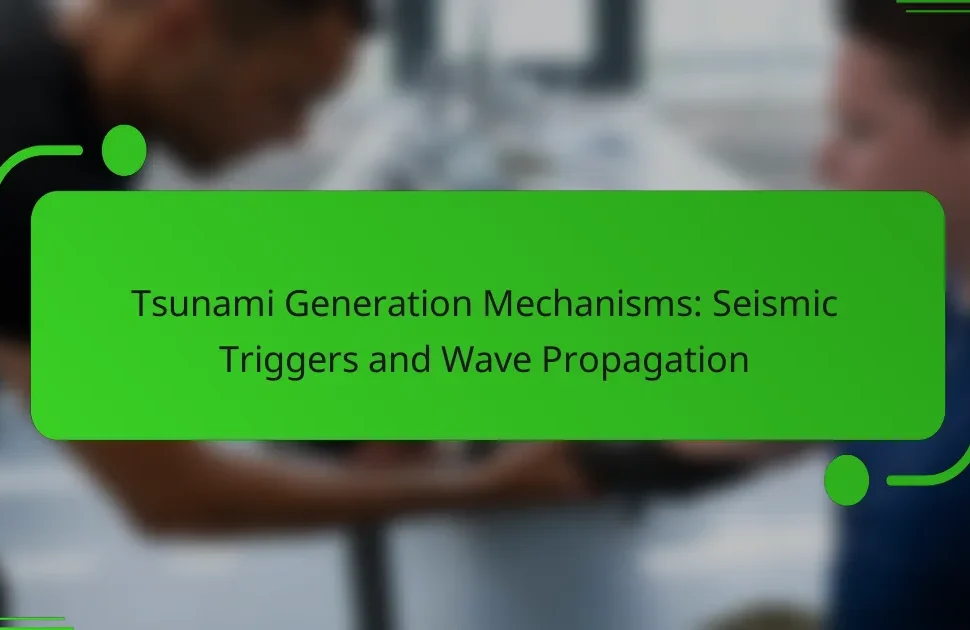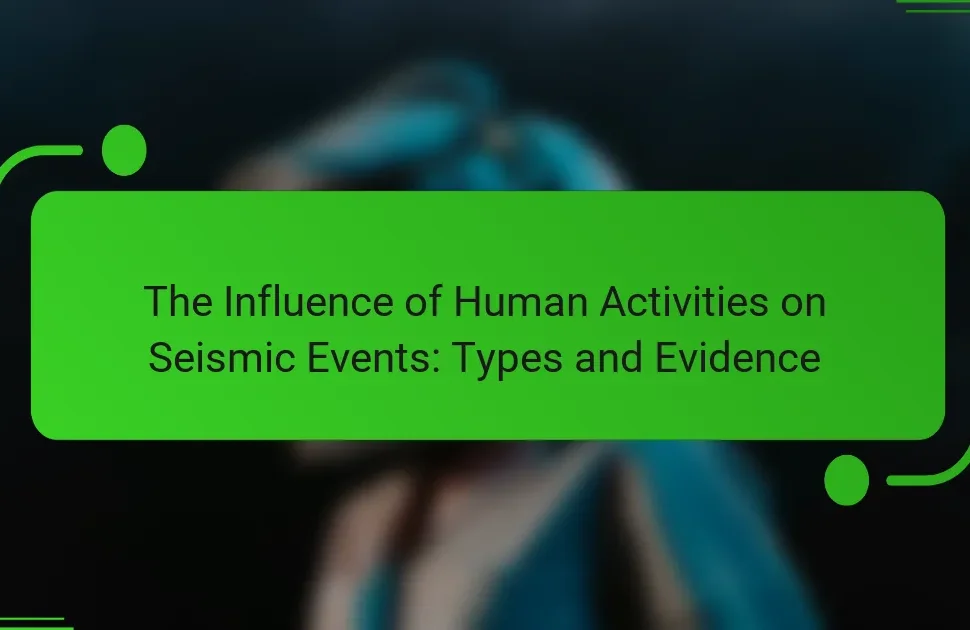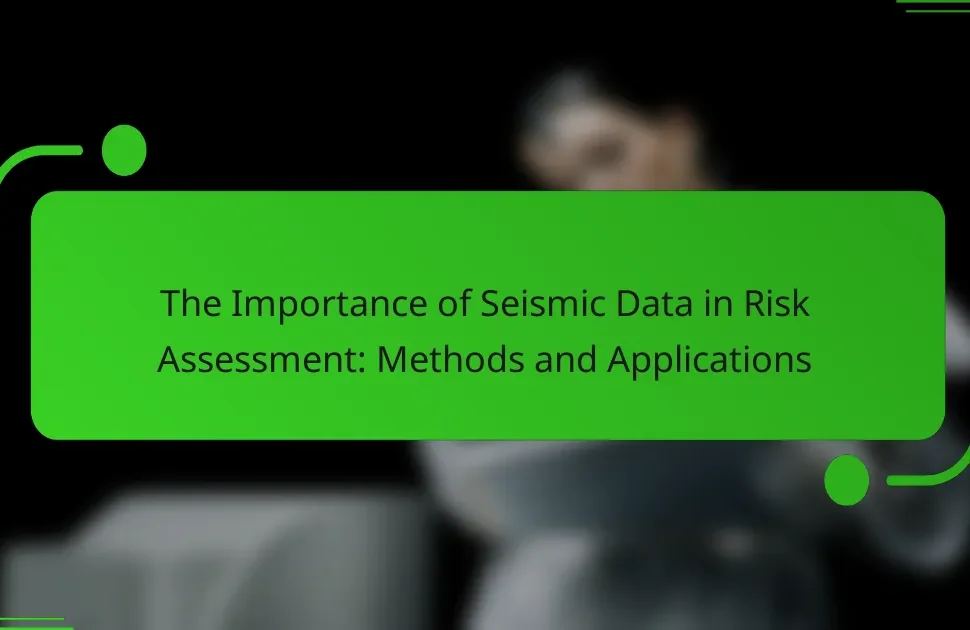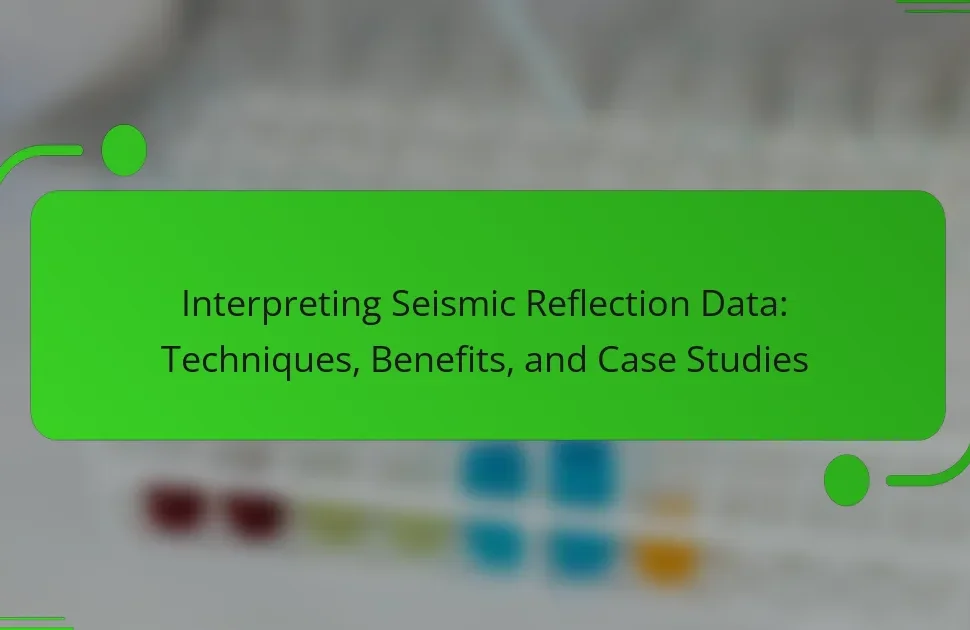Seismic hazard mapping is a scientific process that evaluates the potential for earthquake-related hazards in specific regions. It employs historical seismic data, geological studies, and probabilistic models to identify risks such as ground shaking and surface rupture. The article outlines the methodologies used in seismic hazard mapping, including data sources like historical earthquake records and geological surveys, and discusses its critical applications in engineering, urban planning, and emergency preparedness. Additionally, it highlights the role of seismic hazard maps in informing building codes, land-use planning, and public awareness initiatives, ultimately aiming to minimize risks to life and property in earthquake-prone areas.

What is Seismic Hazard Mapping?
Seismic hazard mapping is a scientific process used to assess the potential for earthquake-related hazards in a specific area. This mapping identifies regions at risk for ground shaking, surface rupture, and other seismic events. It utilizes historical seismic data, geological studies, and probabilistic models to predict potential impacts. The results help in land-use planning, construction standards, and emergency preparedness. Seismic hazard maps are essential for minimizing risks to life and property. These maps often inform building codes and safety regulations. Various countries and regions develop their own seismic hazard maps based on local conditions and historical data.
How is Seismic Hazard Mapping defined in the context of geology?
Seismic hazard mapping is defined as the process of identifying and illustrating the potential seismic risks in a specific area. It involves analyzing geological, seismological, and geotechnical data. This data helps to assess the likelihood of earthquake occurrences and their expected intensity. The maps produced serve as crucial tools for urban planning and infrastructure development. They guide decision-makers in implementing safety measures and land-use planning. Studies show that effective seismic hazard mapping can significantly reduce risks associated with earthquakes. For example, the United States Geological Survey (USGS) regularly updates seismic hazard maps to reflect new data and improve safety standards.
What are the key objectives of Seismic Hazard Mapping?
The key objectives of seismic hazard mapping are to assess potential earthquake risks and to inform land-use planning. These maps identify areas at risk of seismic activity. They provide data on ground shaking, fault lines, and historical seismicity. Seismic hazard maps help in designing buildings to withstand earthquakes. They also guide emergency preparedness and response strategies. Furthermore, they aid in public awareness regarding earthquake risks. Accurate mapping is essential for minimizing damage and saving lives during seismic events.
Why is Seismic Hazard Mapping important for urban planning?
Seismic hazard mapping is crucial for urban planning because it identifies areas at risk of earthquakes. This mapping helps planners design buildings and infrastructure that can withstand seismic forces. It informs zoning regulations and land-use policies to minimize damage during an earthquake. Historical data shows that cities with effective seismic hazard maps experience less destruction. For example, after the 1994 Northridge earthquake, Los Angeles improved its seismic mapping to enhance safety. Accurate hazard maps guide emergency preparedness and response strategies. They also promote public awareness of earthquake risks in urban areas. Overall, seismic hazard mapping is essential for creating resilient communities.
What are the main components of Seismic Hazard Mapping?
The main components of seismic hazard mapping include ground shaking, fault locations, and site conditions. Ground shaking is assessed using historical earthquake data and seismic models. Fault locations are identified through geological surveys and tectonic studies. Site conditions involve analyzing soil types and their response to seismic waves. These components work together to estimate the likelihood and impact of earthquakes in a specific area. Accurate seismic hazard maps are essential for effective urban planning and disaster preparedness.
What data types are essential for creating accurate Seismic Hazard Maps?
Essential data types for creating accurate Seismic Hazard Maps include geological, seismological, and geotechnical data. Geological data provides information on fault lines, rock types, and soil composition. Seismological data involves historical earthquake records and seismic wave propagation characteristics. Geotechnical data assesses soil behavior under seismic loading. Additional data types include land use and population density, which help evaluate potential impacts. These data types enable the assessment of earthquake probabilities and ground shaking intensity. Accurate seismic hazard maps are critical for urban planning and disaster preparedness.
How do geological features influence Seismic Hazard Mapping?
Geological features significantly influence seismic hazard mapping by determining the ground response to seismic waves. These features include fault lines, rock types, and soil conditions. Fault lines indicate potential areas for earthquakes. The type of rock affects how seismic waves travel. For instance, softer soils can amplify shaking, increasing hazard levels. Geological maps provide critical data for identifying these features. Historical earthquake data also helps correlate geological characteristics with seismic activity. Studies have shown that regions with complex geology often experience higher seismic risks. Therefore, understanding geological features is essential for accurate seismic hazard assessments.
What methodologies are used in Seismic Hazard Mapping?
Seismic hazard mapping employs various methodologies to assess earthquake risks. Common methodologies include probabilistic seismic hazard assessment (PSHA) and deterministic seismic hazard assessment (DSHA). PSHA evaluates the likelihood of different ground shaking levels over time. It incorporates seismic sources, ground motion prediction equations, and site response analyses. DSHA focuses on specific earthquake scenarios and their potential impacts. It uses known fault lines and historical earthquake data to estimate ground shaking. Additionally, hazard mapping may integrate geotechnical assessments and community resilience factors. These methodologies provide essential data for urban planning and risk mitigation strategies.
What are the common techniques employed in Seismic Hazard assessment?
Common techniques employed in Seismic Hazard assessment include probabilistic seismic hazard assessment (PSHA) and deterministic seismic hazard assessment (DSHA). PSHA estimates the likelihood of various levels of ground shaking at a site over a specified time period. It incorporates uncertainties in earthquake occurrence, magnitude, and ground motion. DSHA, on the other hand, evaluates the expected ground shaking from specific seismic sources. It uses known fault locations and historical seismicity to determine potential impacts. Both techniques utilize seismic sources, ground motion models, and site response analysis. Studies have shown that PSHA is widely used for risk management in urban planning. DSHA is often applied in engineering design for critical structures.
How do probabilistic and deterministic methods differ in this context?
Probabilistic and deterministic methods differ in seismic hazard mapping primarily in their approach to uncertainty. Probabilistic methods quantify the likelihood of various seismic events occurring over time. They incorporate a range of possible scenarios and their associated probabilities. Deterministic methods, on the other hand, focus on specific seismic events and their expected impacts. They typically use historical data to predict the maximum expected ground shaking for a given location.
Probabilistic methods provide a comprehensive risk assessment by considering multiple factors such as fault lines and seismic activity. For instance, they might estimate the probability of experiencing a certain level of shaking within a specified time frame. Deterministic methods often result in a single value representing the worst-case scenario.
The choice between these methods can significantly affect hazard assessments. Probabilistic assessments often lead to more robust planning and risk management strategies. In contrast, deterministic assessments may be simpler but can overlook variability in seismic behavior. This distinction is crucial for effective seismic hazard mapping.

What data sources are utilized in Seismic Hazard Mapping?
Seismic hazard mapping utilizes various data sources. These include historical earthquake records, which provide insights into past seismic activity. Geological surveys offer information on fault lines and soil types. Seismographic data from monitoring stations helps assess ground motion. Remote sensing technologies contribute to understanding land deformation. Additionally, geotechnical studies provide data on local site conditions. These sources collectively enhance the accuracy of seismic hazard assessments.
What role do historical seismic records play in data collection?
Historical seismic records are crucial for data collection in seismic hazard mapping. They provide a long-term perspective on earthquake frequency and intensity. These records help identify patterns in seismic activity over time. They also assist in estimating the potential impact of future earthquakes. Historical data can reveal the locations of past seismic events. This information is vital for assessing risk in specific regions. Moreover, it aids in refining models used for predicting future seismic hazards. The analysis of these records enhances the accuracy of seismic hazard assessments.
How is real-time seismic data integrated into hazard mapping?
Real-time seismic data is integrated into hazard mapping through continuous monitoring and analysis. Seismographs capture ground motion data during seismic events. This data is transmitted to seismic networks for immediate processing. Advanced algorithms assess the earthquake’s magnitude and depth. The information is then used to update hazard maps dynamically. These maps reflect current seismic risk levels in real-time. Studies show that integrating real-time data improves hazard assessment accuracy. For instance, the USGS utilizes real-time data to enhance public safety during seismic events.
What are the limitations of using historical data for Seismic Hazard Mapping?
The limitations of using historical data for seismic hazard mapping include incompleteness, bias, and temporal relevance. Historical records may not capture all seismic events, leading to an incomplete hazard assessment. Additionally, data may be biased towards more populous areas where recording is more likely. Temporal relevance is another concern, as seismicity can change over time due to various factors, including tectonic activity. Furthermore, historical data may lack precise location and magnitude details, impacting the accuracy of hazard models. This can result in underestimating or overestimating the risk in certain regions.
How does remote sensing contribute to data collection for Seismic Hazard Mapping?
Remote sensing enhances data collection for seismic hazard mapping by providing detailed geospatial information. It captures surface deformation, land use changes, and geological features. Satellite imagery and aerial surveys reveal fault lines and land subsidence. These observations help identify areas at risk of seismic activity. Remote sensing also allows for large-scale monitoring over time. Techniques like interferometric synthetic aperture radar (InSAR) measure ground displacement with high precision. This data is crucial for assessing potential hazards and planning mitigation strategies. Studies show that integrating remote sensing data improves the accuracy of seismic hazard assessments.
What technologies are used in remote sensing for seismic analysis?
Remote sensing for seismic analysis utilizes various technologies. These include satellite imagery, which captures large-scale geological features. Synthetic Aperture Radar (SAR) is another key technology. SAR can detect ground displacement with high precision. In addition, LiDAR (Light Detection and Ranging) provides detailed topographical data. Seismic sensors also play a crucial role in data collection. They can measure ground vibrations and provide real-time data. Advanced data processing techniques enhance the analysis of seismic data. These technologies collectively improve the accuracy of seismic hazard assessments.
How can satellite imagery enhance Seismic Hazard assessments?
Satellite imagery enhances seismic hazard assessments by providing detailed visual data of the Earth’s surface. It allows for the identification of geological features, such as fault lines and land deformation. High-resolution images can reveal changes in land use and urban development, which are critical for understanding risk exposure. Satellite data can also support the monitoring of ground movement over time, aiding in the detection of seismic activity. Additionally, remote sensing can be used to assess damage after seismic events, improving future hazard assessments. Studies have shown that integrating satellite imagery with traditional methods increases the accuracy of seismic hazard models. For instance, the use of Synthetic Aperture Radar (SAR) has proven effective in measuring ground displacement during earthquakes.
What are the challenges in data collection for Seismic Hazard Mapping?
Data collection for seismic hazard mapping faces several challenges. One major issue is the lack of comprehensive seismic data in many regions. Many areas have insufficient historical earthquake records, making it hard to assess risk accurately. Additionally, the variability in geological conditions complicates data collection. Different soil types and structures can significantly influence seismic responses. Another challenge is the integration of diverse data sources. Combining data from various agencies and studies often leads to inconsistencies. Furthermore, technological limitations can hinder data acquisition. Equipment may not be available or may not function optimally in remote areas. Finally, funding constraints can limit the scope of data collection efforts. Many projects struggle to secure adequate financial resources for extensive data gathering.
What issues arise from data accuracy and reliability?
Data accuracy and reliability issues can significantly impact seismic hazard mapping. Inaccurate data can lead to incorrect hazard assessments. This may result in inadequate preparedness for seismic events. Reliability of data sources is crucial for valid conclusions. Unreliable data can introduce uncertainties in risk management. Historical data may be incomplete or biased, affecting analysis. Furthermore, variations in measurement techniques can create inconsistencies. These issues can undermine public trust in safety measures. Ultimately, poor data quality can lead to economic losses and increased vulnerability.
How do geographic and infrastructural factors impact data gathering?
Geographic and infrastructural factors significantly impact data gathering in seismic hazard mapping. Geographic features such as mountains, rivers, and urban areas can influence the accessibility of data collection sites. For instance, mountainous regions may limit the deployment of sensors and field studies. Infrastructural elements like roads and communication networks affect the speed and efficiency of data transmission. Areas with well-developed infrastructure facilitate timely data gathering and sharing. Conversely, regions lacking infrastructure may experience delays in data collection. A study by the United States Geological Survey (USGS) highlights that remote areas often have sparse data due to logistical challenges. Therefore, both geographic and infrastructural factors play critical roles in the effectiveness of data gathering efforts in seismic hazard mapping.

What are the applications of Seismic Hazard Mapping?
Seismic hazard mapping has several critical applications in engineering and urban planning. It is used to inform building codes and standards, ensuring structures can withstand potential earthquakes. This mapping aids in land-use planning by identifying safe locations for development. Emergency preparedness and response strategies rely on seismic hazard maps to plan for potential disaster scenarios. Additionally, these maps assist in risk assessment for insurance purposes, helping insurers evaluate potential losses. They also support public awareness campaigns about earthquake risks. Seismic hazard maps guide infrastructure development, such as roads and bridges, to enhance safety. Overall, they play a vital role in minimizing the impact of seismic events on communities.
How is Seismic Hazard Mapping used in urban development?
Seismic hazard mapping is utilized in urban development to identify areas at risk of earthquakes. This mapping informs land-use planning and building codes. It helps engineers design structures that can withstand seismic forces. Urban planners use this data to avoid high-risk zones for critical infrastructure. The Federal Emergency Management Agency (FEMA) recommends seismic hazard maps for effective urban planning. Cities like San Francisco have incorporated these maps into their zoning laws. This practice enhances public safety and minimizes economic losses from potential earthquakes. Seismic hazard mapping is essential for sustainable urban development in earthquake-prone regions.
What guidelines do planners follow based on Seismic Hazard Maps?
Planners follow specific guidelines based on Seismic Hazard Maps to ensure safety and compliance. These guidelines include identifying areas with varying seismic risks. They utilize the maps to inform land-use planning and building codes. Planners assess the potential for ground shaking, fault displacement, and liquefaction. They also determine appropriate construction practices for different risk zones. The guidelines help in emergency preparedness and response planning. Compliance with local regulations often requires adherence to these seismic guidelines. Historical earthquake data supports the effectiveness of these guidelines in reducing risk.
How does Seismic Hazard Mapping influence building codes and regulations?
Seismic Hazard Mapping directly influences building codes and regulations by providing essential data on earthquake risks. This mapping identifies areas with varying levels of seismic activity. Building codes are then adapted to ensure structures can withstand potential earthquakes. For instance, regions marked as high risk may require stricter design standards. These standards often include reinforced materials and specific construction techniques. Evidence from seismic hazard maps informs local governments on necessary regulatory updates. Historical data shows that regions with updated codes experience less damage during earthquakes. Overall, seismic hazard mapping serves as a critical tool for enhancing public safety through informed building regulations.
What role does Seismic Hazard Mapping play in disaster preparedness?
Seismic hazard mapping plays a critical role in disaster preparedness by identifying areas at risk of earthquakes. It provides essential data on potential ground shaking, fault lines, and historical seismic activity. This information helps communities assess their vulnerability to seismic events. By understanding these risks, local governments can develop effective emergency response plans. Additionally, seismic hazard maps guide land-use planning and construction standards. They inform building codes to ensure structures can withstand seismic forces. Research indicates that regions utilizing seismic hazard maps have improved resilience against earthquakes. For example, the United States Geological Survey (USGS) regularly updates hazard maps to reflect new data and enhance preparedness efforts.
How can communities utilize Seismic Hazard Maps for emergency planning?
Communities can utilize Seismic Hazard Maps for emergency planning by identifying areas at risk for earthquakes. These maps provide information on the likelihood and severity of seismic events in specific locations. Communities can assess their vulnerability based on these risk levels. This assessment helps in prioritizing resources for emergency response. It also aids in designing infrastructure that can withstand seismic activity. Furthermore, communities can develop evacuation plans tailored to identified hazard zones. Training and drills can be organized based on the information from these maps. Historical data indicates that informed planning reduces casualties and property damage during seismic events.
What educational resources are available for public awareness of seismic hazards?
Educational resources for public awareness of seismic hazards include government websites, educational institutions, and non-profit organizations. The United States Geological Survey (USGS) provides comprehensive information on seismic hazards. The Federal Emergency Management Agency (FEMA) offers resources for disaster preparedness related to earthquakes. Universities often have programs and materials focused on earthquake education. Non-profits like the Earthquake Engineering Research Institute (EERI) provide outreach and educational materials. Local agencies may also conduct workshops and community events to raise awareness. These resources aim to inform the public about seismic risks and preparedness strategies.
What are the future trends in Seismic Hazard Mapping?
Future trends in seismic hazard mapping include enhanced data integration and advanced modeling techniques. These developments will improve the accuracy of hazard assessments. Increasing use of machine learning will allow for better prediction of seismic events. Real-time data collection through IoT devices will enhance monitoring capabilities. Improved public access to hazard maps will promote community preparedness. Collaboration between researchers and policymakers will drive the adoption of innovative methodologies. Advances in geographic information systems (GIS) will facilitate more detailed analyses. Overall, these trends aim to create more resilient infrastructures and informed decision-making processes.
How is technology shaping the evolution of Seismic Hazard Mapping?
Technology is significantly shaping the evolution of seismic hazard mapping through advanced data collection and analysis methods. Modern seismic hazard mapping utilizes sophisticated sensors and satellite technology for real-time data acquisition. These technologies enhance the accuracy of seismic models by providing detailed information on ground motion and geological conditions. Geographic Information Systems (GIS) are increasingly employed to visualize and analyze seismic data effectively. Machine learning algorithms are being integrated to predict seismic hazards based on historical data patterns. Additionally, cloud computing allows for the storage and processing of vast amounts of seismic data, facilitating quicker updates to hazard maps. As a result, these technological advancements lead to more reliable and comprehensive seismic hazard assessments.
What innovations are expected to enhance the accuracy of hazard assessments?
Innovations expected to enhance the accuracy of hazard assessments include advanced data analytics and machine learning algorithms. These technologies can process large datasets effectively, identifying patterns that traditional methods may overlook. Real-time monitoring systems using IoT devices provide immediate data on seismic activity. This allows for timely updates to hazard assessments. Enhanced geospatial technologies, such as LiDAR, improve terrain mapping accuracy. Improved modeling techniques simulate seismic impacts more realistically. Collaborative platforms facilitate data sharing among researchers, increasing the breadth of information available. All these innovations contribute to more precise hazard assessments, ultimately improving safety and preparedness.
What best practices should be followed in Seismic Hazard Mapping?
Best practices in seismic hazard mapping include using updated seismic data and models. Accurate data collection is essential for reliable mapping. Incorporating local geological conditions improves hazard assessments. Collaboration with regional experts enhances the mapping process. Utilizing probabilistic seismic hazard assessment (PSHA) provides a comprehensive risk evaluation. Regularly updating maps ensures they reflect current knowledge and conditions. Engaging stakeholders fosters community awareness and preparedness. Adopting standardized methodologies promotes consistency across different studies.
How can collaboration among stakeholders improve Seismic Hazard Mapping efforts?
Collaboration among stakeholders can significantly enhance Seismic Hazard Mapping efforts. It facilitates the sharing of diverse data sources and expertise. Different stakeholders, such as governmental agencies, researchers, and local communities, bring unique insights. This collective knowledge helps in identifying seismic vulnerabilities more accurately. Collaborative efforts can lead to improved methodologies in hazard assessment. For instance, combining geological data with urban planning insights can refine risk models. Additionally, stakeholders can coordinate resources for more comprehensive mapping initiatives. Successful examples include partnerships in California, where state agencies and universities work together on seismic studies. Such collaborations ultimately lead to more effective hazard mitigation strategies.
What are the key considerations for effective implementation of hazard maps?
Key considerations for effective implementation of hazard maps include accurate data collection, stakeholder engagement, and clear communication. Accurate data collection ensures that hazard maps reflect real risks, utilizing reliable historical data and scientific research. Stakeholder engagement involves collaboration with local communities, government agencies, and experts to incorporate diverse perspectives and needs. Clear communication of the hazard map’s findings enhances public understanding and promotes appropriate responses. Regular updates and revisions of hazard maps are necessary to reflect changing conditions and new data. These considerations are essential for creating effective hazard maps that can guide disaster preparedness and response efforts.
Seismic hazard mapping is a scientific process that assesses the potential for earthquake-related hazards in specific areas, utilizing historical seismic data, geological studies, and probabilistic models. The article covers key methodologies, including probabilistic and deterministic assessments, essential data sources such as geological and seismological information, and the role of remote sensing technologies. It also highlights the importance of seismic hazard mapping in urban planning, emergency preparedness, and the development of building codes. Furthermore, the article discusses challenges in data collection, the influence of geological features, and future trends in enhancing the accuracy of hazard assessments.




